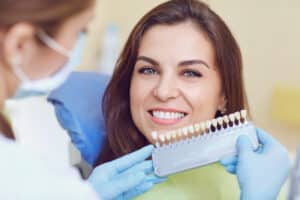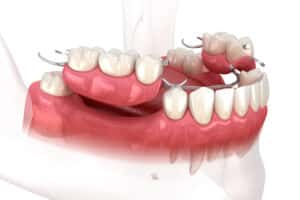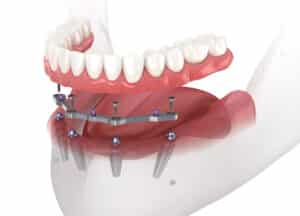Can A Dental Implant Be Placed Immediately After A Tooth Extraction?
In this monograph, I will explore the role of immediate dental implant placement in the dental implant armamentarium.
Definition of immediate implant placement: The placement of an implant in an extraction socket at the time of extraction or explantation.
Can this be done with success? YES, it is a well-documented fact that implants can be placed at the time of extraction with extremely high success (survival) rates. The complete answer is that immediately placed implants survive well, but there are numerous aesthetic issues which can be created using this approach. The current state of the art dictates that immediate placements should not be the treatment of choice in aesthetically demanding cases.
Does the placement of an implant at the time of extraction preserve bone? NO, the placement of an implant in a socket at the time of extraction has nothing to do with bone preservation.
What are some of the contraindications to immediate placement? Infected sockets or pockets, poor primary implant stability, aesthetically demanding cases. Patients who present with an allergy to penicillin seem to have a higher complication rate with immediate placement.
If the socket is intact, how wide a gap can be left between the socket wall and the implant wall? If the residual defect between the socket wall and the implant surface exceeds 2 millimeters, then that portion of the implant will not integrate unless it is filled with a bone graft and protected by a regenerative membrane.
What if the bony walls of the socket are fully or partially absent? Immediate placement can still produce high survival rates as long as infection is controlled, a bone graft and/or regenerative membrane is used, and good primary stability is achieved. Additionally, it is prudent only to use this approach in patients with low aesthetic demand or areas where aesthetics are not a major consideration.
Why is immediate placement a poor choice in aesthetically demanding areas? When a tooth is extracted, the bone remodels regardless of whether an implant is placed immediately or not. The thin buccal plate, even if intact, undergoes palatal and apical resorption. This moves the free soft tissue margin apically and palatally leaving a tooth which appears longer than its neighbors. The facial collapse produces an unaesthetic emergence. It is well documented that this mid-facial tissue will recede approximately 1 millimeter over a 12-24 month period. While papillary areas have the potential to stay the same over time or improve, the mid-facial rarely stays the same and usually worsens (recedes) over time. This issue occurs with all implant systems.
The solution to this complex dilemma will be the subject of my next monographs.





